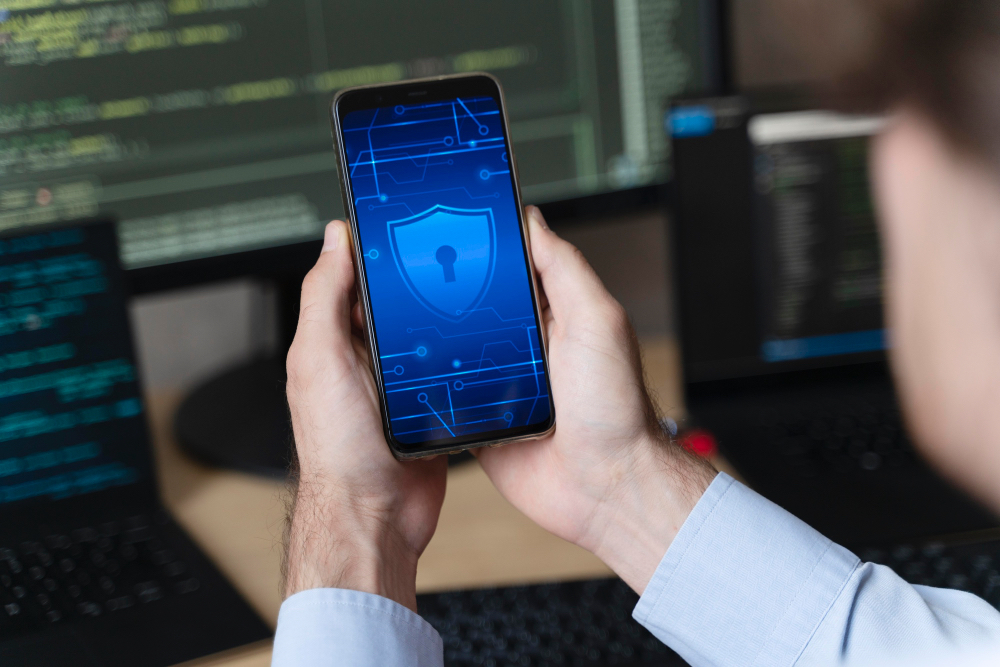The digital era portends that businesses must integrate apps, new devices, and technological innovations into their daily processes; India, as a technological hub, could become a booming place for data breaches and hackers to unleash mammoth cybercrimes. Before businesses decided to adopt digital transformation initiatives, cybercrimes have been thriving, but hackers are taking their nefarious activities to another level altogether; it has become critical that businesses in India endeavor to boost cybersecurity practices.
Integrating technological innovations and apps has ensured that businesses in India improve employees’ productivity and customer satisfaction; with several people working and shopping remotely, data packet transmission must be safe and secure, especially when using insecure networks, such аѕ public Wi-Fi and the World Wide Web.

Increasing the demand for virtual private network (VPN) services in India that offer innovative features has become vital to combating cybercrime. One such VPN service is the Free India VPN, with several innovative features to help businesses protect their data and networks from cyber threats and enable a robust technological revolution.
The following are some innovative features of the free Indian VPN that boost cybersecurity practices:
Post Contents
1. End-to-end encryption (E2EE)
One of the most significant features of the Free India VPN is its ability to provide end-to-end encryption (E2EE) for data transmission. E2EE enables the encryption of all data transmitted through the free Indian VPN, making it virtually impossible for cybercriminals to intercept and steal sensitive information.
For businesses that deal with sensitive data such as financial information, trade secrets, and customer data, E2EE ensures that even when such data falls into unauthorized hands, it is useless, meaningless, and gibberish since the hackers can’t decipher the encryption.
2. Post-quantum cryptography
As a result of the looming threat of quantum computing, the free Indian VPN is increasingly adopting post-quantum cryptography. The cryptographic approach in the design of post-quantum cryptography can withstand the computational power of quantum computers that hackers leverage for unprecedented cybercrimes, ensuring the longevity and robustness of VPN security protocols.
3. AI-powered threat detection
Incorporating artificial intelligence (AI) into the free Indian VPN takes threat detection to a higher dimension. Real-time pattern and behavior analyses with the AI-powered free Indian VPN enable prompt identification and ultimate neutralization of potential threats.
Integrating the proactive approach of AI-powered threat detection comes as an innovative shift in cybersecurity that businesses can leverage to ensure a secure online environment.
4. Split tunneling 2.0
Split tunneling 2.0 is an innovative approach of the free Indian VPN that is a radical departure from the traditional split tunneling feature in VPNs hackers are familiar with; anyone using the free Indian VPN with the split tunneling 2.0 feature has more precise control over the internet traffic. The innovative feature allows you to selectively choose which applications or data packets you need to go through the encrypted VPN tunnel and which should access the internet directly.
While many organizations still rely on traditional split tunneling, the innovative feature (split tunneling 2.0) takes customization and cybersecurity best practices to the next dimension. You can now selectively route your sensitive, specific, and vital traffic through your free Indian VPN and allow non-sensitive traffic to bypass it.
This innovative fine-tuned control optimizes performance and enhances a better-secured internet browsing experience. Indian businesses that need to access local resources such as printers or network drives and still require a secure connection for their internet traffic will find this feature a wholesome technological evolution.
5. Free Indian multi-hopping VPNs
The ability to multi-hop, double VPN, or cascade is an unprecedented feature that boosts cybersecurity practices; free Indian VPN will route your internet traffic through multiple servers before arriving at its final destination. A multi-hop VPN elevates anonymity to an ultimate level; tracking your online activities by hackers or third parties is nearly impossible when the free Indian VPN routes your connection through multiple servers in different locations, creating a complex web that enhances privacy and improves cybersecurity practices.
Multi-hopping enables businesses to access the internet while concealing their real IP addresses or locations. Cascading is crucial for the survival of an organization operating in a country or region with strict internet censorship or regulations.
Such an organization leverages cascading to bypass geo-restrictions and freely access the internet.
6. Preventing data leaks
The free India VPN saves costs and offers an innovative kill switch feature that automatically aborts the internet connection if the VPN connection experiences downtime; this helps to prevent data leaks and eliminates compromises of sensitive information in the event of a VPN failure or downtime.
Conclusion
However, you must understand that while a free Indian VPN can provide an added layer of security, it’s not a foolproof solution. You may need to complement your free Indian VPN innovative features with other cybersecurity measures such as firewalls, antivirus software, and employee training to enhance privacy and ensure your networks and data remain secure.
You can rely on the innovative features of the free Indian VPN to ensure your data remains secure and confidential. Market relevance and survival in the highly competitive global market must be paramount to any organization, and the free India VPN helps you to boost cybersecurity practices and improve employees’ productivity and customer experience.